omlouvám se za chybu v odkazu, je to www.husitstvi.cz
Armament of Hussites I.
Categories: What didn't fit elsewhere
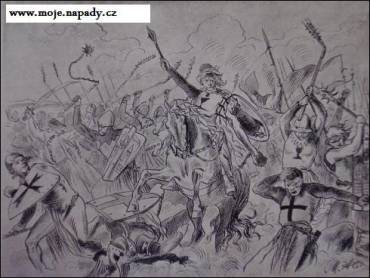
Hussite military tactics marked a special epoch in the history of military. The superiority of the Hussite armies was due, among other things, to their high military morale, for they were all convinced that they were fighting for the right cause. The Hussite troops were governed by a special order of battle, which guaranteed perfect organisation and discipline, which was lacking in the anti-Hussite troops that were recruited from various parts of Europe. And what actually constituted the armament?
The Hussites did not use any new kind of armour. Their advantage lay in the fact that they knew how to use ordinary old firearms. They also knew how to turn peasant weapons into more effective ones. Firearms in particular were used in large numbers, they were important especially for urban Hussite warfare, even though they were very primitive, with low rate of fire and considerable inaccuracy.
The status of the rifle makers was different from that of other guild craftsmen. They were well-paid employees of the municipality - in Znojmo, for example, they received 14-24 groschen a week. In addition to their regular salary, they were paid for the production of individual rifles according to the weight of the metal processed. In addition to gunsmiths, there are also craftsmen who worked under their own direction. Bronze casting predominated in production, but few rifles have survived. The valuable material used for production was then used to make more modern weapons or for other uses. In Louny, for example, old rifles were converted into pipe pipes (water pipes).
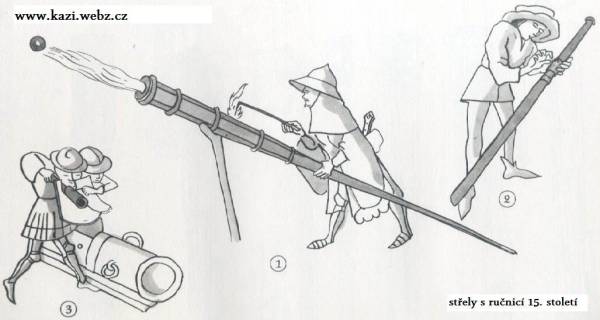
The most commonly used firearm was the handgunswhich were usually forged from iron or cast from copper or bronze. The whistles had a short barrel (about 376 mm) in the shape of an octahedron, the diameter of the barrel itself is about 60 mm, the clearance is 32 mm and it is fitted with a wide round rim at the muzzle. The chamber clearance from the barrel did not differ. The aiming was quite inaccurate, according to the barrel. Coarse sights on the front of the barrel appear later. The range was barely 100 metres. It had to be loaded from the front and fired with a blowtorch or hot iron. The shooter had to have in his equipment: a powder pouch, a bullet pouch (cast lead), an iron loader and a measuring cup, which was used to measure the powder. The oldest preserved handgun is located in Moravská Třebová. A short handgun of smaller calibre, 15-20 mm, is called whistles. Heavier handles were called hook and loop.
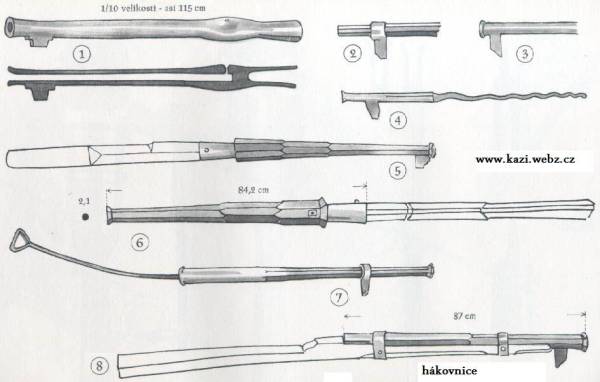
The production of handguns dates back to the 14th century. In 1364, 500 were made in Perugia, their shots penetrating through the armour. Further refinement occurred in 1380 and production rose in Lutich in 1390. It was the fitting of a smaller cannon with a wooden stock. Before 1400, there were still handguns with a stopper on the right side of the chamber and a pan adequately modified so that the hand fitted with a glow-plug did not interfere when aiming as in the case of a pan modified on the top of the barrel. Later, the chokes were fixed in wedges modified on the handguard so that by simply squeezing the chokes, the choker was lowered to the pan and the hand did not have to find the pan. In 1517 a new, rather complicated but reliable lock with a wheel and a pan was built in Nuremberg.
Hussite artillerymen had various types of weapons at their disposal, including tarasnice. It was a long-barreled rifle (21-29 caliber). Probably the oldest surviving piece is the Pilsner tarasnice, which has a cylindrical frontbarrel, reinforced at the chamber by a jacket, with a total length of 1080 mm (21 calibre), calibre 46 mm. The barrels were forged from iron plate and reinforced with jackets. The castings were also made of bronze. The calibre ranged from 40-100 mm. They were fired with stone, later iron wrought balls. In addition to these, cast lead balls and perhaps iron balls cast in lead sheathing were used. There is no record of the range of the tarasnics. The name tarasnice probably comes from the taras, the wooden base on which it was fixed. During the Hussite wars they were apparently often carried on a 'half-vehicle' - a simple wooden batten. In the 15th century, the tarasnice replaced the fortress cannon as a The pipe lock.
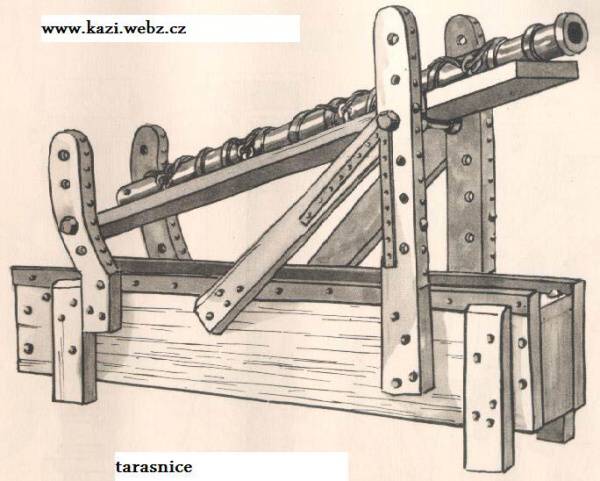
The field gun of the Hussites was the Howitzer. The name derives from the fact that they were used in the field during the swarms. The barrel was shorter than that of the tarasnice, the chamber having less clearance than the barrel. The ammunition was stone balls. They were used to shoot at shorter distances, the range was only slightly less than that of the tarasnica. There is also a hypothesis that the firing coming from howitzers was done in the manner of the later so-called brush fire. Howitzers were mounted on simple two-wheeled trays, which allowed greater speed in moving and greater mobility. The barrel was fixed by iron bands in a wooden bed. This bearing ran backwards in the barrel with a hole through which the barrel was mounted on a roll to allow for aiming control. Sometimes the howitzer is also referred to as a "rifle on wheels".

Other weapons included bombards. These were large rifles with an unusual calibre of up to 85 cm. Their 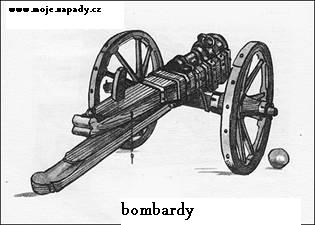 great disadvantage was their considerable immobility, hence the need for special devices. Bombards were usually stored on scaffolding made of beam construction), which limited the effect of recoil. The construction was the same as that of the tarmac. The ratio between barrel clearance and length was to be 1:3, but there were also bombards with much longer barrels (up to 1:7). They were used as a means of breaching walls, which meant close range approach. Therefore, to protect against enemy fire, protective wooden structures were built, which were raised and lowered when fired. The cannons were made mainly by forging. The effective range did not exceed 500 m.
great disadvantage was their considerable immobility, hence the need for special devices. Bombards were usually stored on scaffolding made of beam construction), which limited the effect of recoil. The construction was the same as that of the tarmac. The ratio between barrel clearance and length was to be 1:3, but there were also bombards with much longer barrels (up to 1:7). They were used as a means of breaching walls, which meant close range approach. Therefore, to protect against enemy fire, protective wooden structures were built, which were raised and lowered when fired. The cannons were made mainly by forging. The effective range did not exceed 500 m.
Continued next time....
Source: www.edu.cz, www.hustitstvi.cz, www.seminarky.cz, R. G. Grant: BATTLES
You can search for artifacts from this period using our metal detectors.
The article is included in categories:


